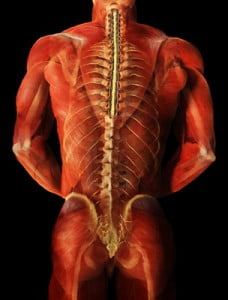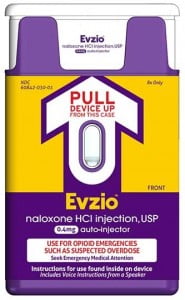Archive for 'Marcus Pain Institute'
When Making Medical Decisions About Pain Relief, Is More Information Better?
In today’s world we are bombarded by information and ways to obtain it. Do you want to know how many steps you take a day? Just buy a device and it will calculate it for you. Care to know what your cholesterol levels are? Simply go get a kit at your nearest drug store. Is it possible we are gathering too much information for our own good?
The same question can be asked about medical testing. Is it useful or even helpful to know certain things about our bodies? Many of us have undoubtedly had the experience where we have gone to the doctor because we had pain and an imaging study was ordered. MRI, CT, and ultrasound can give us information about our bodies that would have been unimaginable in the past.
While technology in general is of course a huge benefit, at the Norman Marcus Pain Institute, we believe it is necessary to proceed with caution as we navigate through it all. At NMPI, one common problem we find in back pain, neck pain, and shoulder pain is the overuse and overreliance on imaging studies. “Abnormalities” are often found on imaging studies without any relation to one’s pain. In fact, seeing abnormalities is more common than seeing a “normal” spine! For example, up to 40% of people without back pain can have herniated discs and as many as 70% may have degenerated discs. That is why the US Institute of Medicine suggests not getting an MRI too quickly since you are likely to see one of these problems and assume it is the cause of your pain. This can lead to unnecessary nerve blocks and surgery.
herniated discs and as many as 70% may have degenerated discs. That is why the US Institute of Medicine suggests not getting an MRI too quickly since you are likely to see one of these problems and assume it is the cause of your pain. This can lead to unnecessary nerve blocks and surgery.
At NMPI, we often see patients who have a herniated disc, yet they only have pain in their back and buttock. They have not experienced any radiation into the leg(s) at all. In these patients, the pain generally has nothing to do with the disc herniation since disc herniation pain generally radiates down the leg and into the foot. Even when the patient is experiencing pain down the leg with a herniated disc found on MRI, muscles in the low back and buttocks may be the cause of the pain. If muscles are not examined as a potential cause, you may undergo an apparently reasonable surgery, without achieving relief of pain. Some studies show that up to 50% of spine surgeries fail (resulting in failed back surgery syndrome) and one of the reasons is the failure to identify muscles that were the true source of the pain.
Most back pain and neck pain is caused by soft tissue such as muscles and tendons. This is confusing because you may have been told your pain is from your spine, discs, or nerves. The problem is most people as they get older have signs of wear and tear on their x-rays and MRIs, but these common signs of aging may not explain your pain if the pain actually originates in your muscles. That’s why we say, when diagnosing persistent pain it’s not having “more” information at hand, it’s having the “right” information at hand.
At NMPI, we often see patients who experience persistent pain even after multiple spine surgeries. Our non-surgical, non-invasive treatment program has most of our patients leaving our office free of long standing back, neck, shoulder, and headache pain.
What To Do When Back Pain Causes Overdose?
“We don’t appreciate what we have until it’s gone.” If only we had a dime for every time we heard this. Perhaps the reason it is such a common expression is the simple truth in it. This certainly applies to our health, but specifically our backs. We probably all take our good health in vain, until something goes wrong. By the time we are in our forties over twenty percent of us experience some form of back pain. And what do we do when we experience pain? Well, unfortunately many people will turn to strong painkillers. This means opioids, morphine-like painkillers. And, while we have written about this topic in the past, there is something new on the horizon. Evzio, the brand name of injectable Naloxone, is a prescription medicine that can block the effects of morphine and related painkillers. Approved by the FDA in April 2014, it allows a patient to quickly treat themselves or be treated by a family member if the patient has overdosed on opioids.
In the past, Evzio was difficult to obtain due to its high cost. However, recently The Clinton Foundation announced that it has negotiated a lower price for Evzio (see NYT article). This will allow municipalities to more easily purchase this medication, making it more available to those who need it.
It is a sad reality that many people will turn, in desperation, to painkillers as an answer to their aching backs. We, at the Norman Marcus Pain Institute, only use opioids as a last resort. Our method of finding the source of the pain and treating it has eliminated back pain for thousands of patients.. Nevertheless, with the rise of overdoses each year, the increased availability of naloxone to non-medical personnel will allow lives to be saved.
Is Looking Good Worth Having Back Pain?
There is an old expression, “beauty is pain.” Does it need to be? Is it worth risking your long-term health? Why do women wear high-heeled shoes when they know that looking beautiful in the moment may cause them pain down the road? Scientists from the Universite de Bretagne-Sud recently conducted experiments, which studied the effects of high-heeled women on men. Women who wore higher heels (3-4 inches vs. 2 inch heels) were able to get more men to answer survey questions on the streets and were picked up faster in bars and clubs. These studies show some type of empowerment in women with high-heeled shoes. Knowing that this empowerment exists, and as fashion has increased the height of heels from 4 inches to 5 inches, we would like to remind you that walking for extended periods in high heels can cause calf tendons to shorten and possibly result in an increase in low back pain.
Here at the Norman Marcus Pain Institute, we see patients that run the gamut of factors causing their back pain. Prevention is always the best treatment; since low back pain affects so many of us a simple intervention is being more conscious of our shoes! While those Manolo Blahniks and Jimmy Choos may be stunning, they may be causing a problem for you down the line. At NMPI, we won’t say don’t wear them, just please, wear them in moderation.
Why Health Insurances Carriers Should Not Be For Profit Enterprises
In November, I read this article in The New York Times on How Medical Care Is Being Corrupted. In a nutshell — Insurance carriers have been incentivizing care for more than 20 years by selectively paying for some services whilst denying others.
To successfully address a complicated problem, such as long-standing pain, more than one approach is often most effective albeit initially more expensive. As a Pain Medicine physician, I have witnessed the defunding of the only approach that has been found to be consistently successful (by the Cochrane database for systematic reviews) in addressing patients disabled by chronic back pain: comprehensive multidisciplinary pain treatment centers.
While cost should be a consideration in choosing treatment – it should not be the primary deciding factor. For-profit insurance companies can be effective in helping policyholders fund their medical care but they are constrained by conflicting interests
- A moral and ethical obligation to care for policyholders who have purchased a policy to protect their health.
- Shareholders who have invested in the company and expect each quarter to produce a reasonable profit.
If you believe, as I do, that health insurance not be allowed to be a for profit enterprise, join in a national discussion to legislate that all health insurance be not-for-profit. Insurance companies should only exist for the protection of the individual patient.
Rafael Nadal will receive stem cell therapy for back pain – Should You?
Earlier in November, Rafael Nadal, the 14-time Grand Slam winner, announced he would receive stem cell treatment to help heal his ailing back, the same type of treatment he received for his knee. His doctor in Barcelona, Dr. Angel Ruiz-Cotorro, who has been treating Nadal for 14 years, said, “Nadal’s back pain is ‘typical of tennis’ players in that the treatment is meant to help repair his cartilage.” Stem cells were recently extracted from Nadal for a cultivation process to “produce the necessary quantities,” said Ruiz-Cotorro. Once cultivated, the stem cells will be placed into the joints of his spine with the goal of regeneration of cartilage as well as for an anti-inflammatory effect. Dr. Ruiz-Cotorro predicts that Nadal can return to training in early December.
Will stem cell treatment work for Nadal’s Back Pain?
Stem cell treatment may seem logical in certain situations – for example, if you have a mechanical problem where a knee has worn out cartilage, causing bone to rub against bone, it makes sense to use stem cells to grow new cartilage to have a cushion to protect the bone and cause the knee to be less painful. As much as we may want to see him back on the courts  grabbing more grand slam titles, if Nadal’s stem cell treatment is being used to eliminate his pain by repairing his joints or discs, the actual cause of his back pain may not be addressed.
grabbing more grand slam titles, if Nadal’s stem cell treatment is being used to eliminate his pain by repairing his joints or discs, the actual cause of his back pain may not be addressed.
Where does back pain originate?
The number one reason for back pain is muscular and other soft tissue, yet muscles are rarely evaluated as the cause of back pain. The only way to determine if Nadal’s back pain is from soft tissue and similar to most people with back pain would be a physical examination of Nadal’s back that included identifying possible muscles as the cause of his pain.
Some doctors believe that the disc, the cushion between the bones of the spine (the vertebra), is a major cause of back pain. They believe that surgeries to correct the flattening or herniation of the disc will decrease or eliminate back pain. Sometimes they are right, but they are just as likely to be wrong. The truth is that there is as high as a 50% failure rate for spine surgeries that were done to eliminate back pain thought to be related to disc problems. There are other joints in the spine that are thought to cause pain; one of them is the facet joint, which could also be a target for stem cell treatments.
When doctors rely on an MRI or CT scan to determine the source of the pain, the information obtained is often confusing. If a surgeon sees an abnormality on an MRI, he will often point to that abnormality as the cause of the pain; in my experience the abnormality found on an MRI or CT scan frequently is not the cause. In fact, if you randomly selected 100 people off the street, and perform an imaging scan, 40 may present with a herniated disc and have no pain and absolutely no awareness of their herniated disc; 70 may have degenerated (worn) discs with no pain, and a large number will have facet joint abnormalities. Therefore, finding an “abnormality” is more common than not. One, then, can deduce that the abnormality is more likely NOT the source of the pain. So treating the abnormality (with steroid injections, surgery, or stem cells) may therefore not relieve the pain.
Stem Cell Treatment and Sports Stars
Nadal, currently ranked as the number 3 professional tennis player in the world, is not the first sports star to chase after a “miracle cure.” The Denver Bronco quarterback Payton Manning and Yankees pitcher Bartolo Colon both went abroad to seek out stem cell treatment as a quick fix to get back in the game. (They both seem to be doing better overall, but it is inconclusive if the stem cell treatment was the cause of their recovery).
Will it work?
In the laboratory, it has been possible to demonstrate the ability of stem cells (most commonly found in the developing embryo and newborn) to grow new tissue. These cells are like silly putty; they can turn into, or adapt, to become any type of tissue. For example, a stem cell in the right environment in the body could become bone, cartilage or some organ (for example, liver or pancreas). But, it hasn’t been as easy to grow tissue in an actual person. There are some early studies that show that stem cells “may” relieve back pain, but both the doctors who are testing the technique and outside experts say much more research is needed before they can say whether the treatment offers real relief.
The use of stem cell therapies continues to be a hot topic for debate in the sports medicine and orthopedic surgery worlds. There is no current evidence-based research to prove that it works.
Sir William Osler, a famous physician, once said: “Use every new treatment as quickly as possible before it stops working.” Stem cell treatment needs to be further investigated to determine if stem cell treatments indeed work, and if so, for what conditions?
Medical Mystery
For seven years, searing pain with no relief – that was the title of The Washington Post story that peaked my interest. So I read the article and discovered that Charon Wicker had been experiencing a burning, throbbing, excruciatingly painful sensation in her index finger – for seven years – even though she had:
- Repeatedly consulted pain specialists and orthopedic surgeons, internist and endocrinologist; and even a hand surgeon;
- Undergone two operations to replace the herniated disks in her neck;
- Taken all sorts of painkillers and become dependent on the sleeping pill Ambien;
- Received X-rays, MRI scans, and a nerve conduction test all negative);
- Spent months in physical therapy;
- Took a variety of anti-inflammatory drugs, increasingly strong painkillers, including oxycodone.
But nothing worked. Ms. Wicker’s pain continued.
The Case of Sore Fingertip looked as if it was a case for Sherlock Holmes (or his creator Dr. Arthur Conan Doyle) or Dr Gregory House.
It made me think — Be careful whom you ask for help!
And finally, Charon did get the right help from a hand surgeon who, listened to his patient; reviewed her medical history; and then examined her fingertip – where she had been complaining of pain for seven years, carefully. He saw a “slight bluish discoloration underneath her nail,” and found the cause of her pain — a rare benign vascular growth – smaller than the head of a pin – a tumor. He removed the glomus tumor and the pain was gone.
It’s uncommon to find that persistent pain is caused by a glomus tumor – but it is common that someone with persistent pain will be offered spine surgery to help them.
It is unfortunate that in Ms. Wicker’s case, she underwent TWO aggressive spinal surgeries and the pain continued. Even though her pain was in her fingertip (something that would clearly not be caused by a faulty disk or helped with insertion of an artificial disc in her neck) and there were no signs or symptoms that pointed to spine surgery to mitigate the pain, surgeons suggested two separate operations to replace the spinal disks. Whereas drugs have to go through extensive testing to show they are safe and effective, surgical procedures do not. When the first surgery didn’t work, the suggested solution was another surgery to replace another the disc.
In my practice, I have seen many patients over the years who come to my office complaining of chronic neck, shoulder, low back and/or leg pain that continues after “failed back spinal surgery. The herniated disc that was discovered on an MRI didn’t explain the source of their pain.
MRIs can show doctors beautiful pictures of the bones and the material separating the bones (the discs) of our spines but interestingly an MRI of the spine will usually find some “abnormality” in most adults – the majority of the time without any pain complaint. Desperation is often one of the reasons that patients undergo very invasive procedures based on an MRI and not supported by the clinical picture.
Sometimes a surgery works but how could it in The Case of Sore Fingertip? It didn’t and as Sherlock would say, “It’s elementary, my dear Watson.” It just didn’t make sense.
You can read the article in full here.


